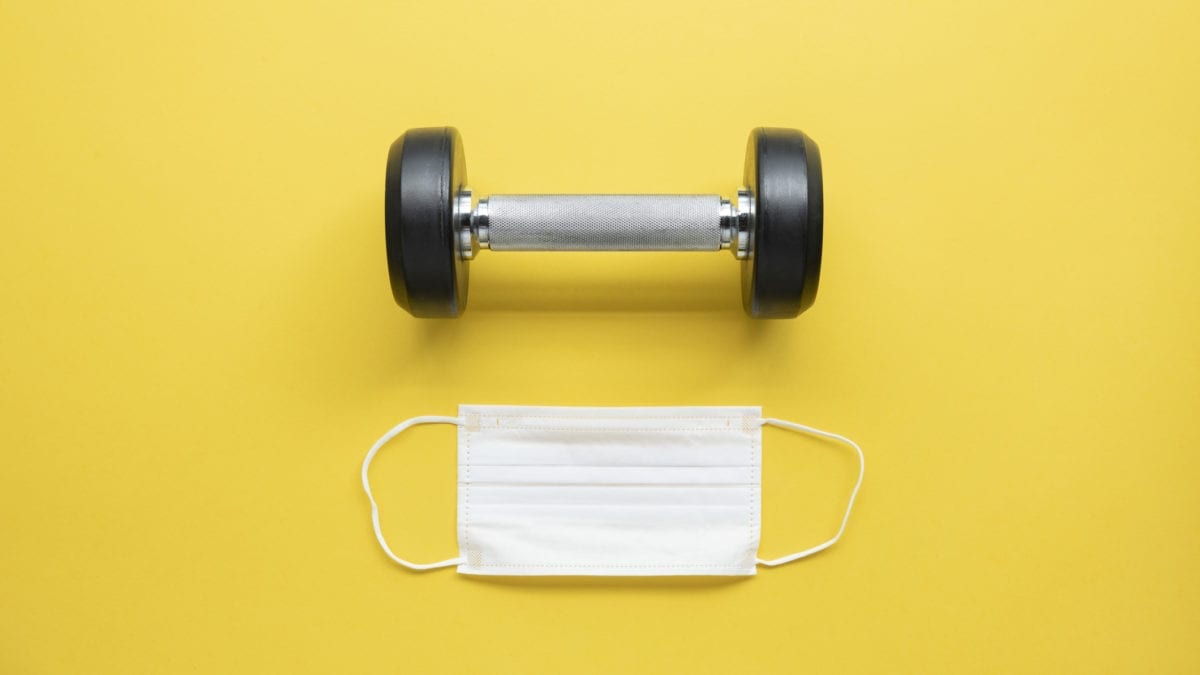The Gym Might Protect Your Heart From Covid-19
A recent study from JAMA Cardiol suggests that professional athletes are at a significantly lower risk of heart damage from COVID-19

As Alberta’s climbing gyms reopen, many athletes are excited to get back to their favourite form of physical activity. With lockdowns and stay-at-home orders, one of the pandemic’s less obvious casualties is personal fitness. What happens when the athlete locks the door and refrains from physical exercise?
According the U.S. National Library of Medicine, “Exercise helps decrease your chances of developing heart disease,” and is considered one of the many ways to increase the strength of your immune system. That said, it is not a cause-effect relationship where every pull-up allows for another increment of immunity. Instead, overall fitness helps the immune system function properly.
COVID-19 is caused by severe acute respiratory syndrome coronavirus 2 (SARS-CoV-2). Among COVID-19 patients, there is a high prevalence of cardiovascular disease. More than 7% of patients experience myocardial injury from the infection. Myocardial injury makes up 22% of the critically ill coronavirus patients.
When the coronavirus disease (COVID-19) produces cardiovascular complications, it results in a form of heart disease. This results in inflammation which can increase the risk of a heart attack. If exercise reduces the risk of heart disease, it would follow that athletes might be less susceptible to the myocardial injuries that result from the virus.
Until recently, it was unclear whether or not this was the case. On March 4, 2021 several doctors published the findings from their original investigation. They were determined to find out the prevalence of Heart Disease among Professional Athletes with prior COVID-19 Infections.
This study was taken as a function of recommendations regarding screening athletes that were infected for the relative safety of returning to their sport. There could be dangers for individuals with myocardial damage returning to high-intensity activity.
While this study remains the first of its kind, the findings are promising. From 789 professional athletes diagnosed with the COVID-19 infection, only 5 (0.6%) suffered from evidence of inflammatory heart disease.
While the average infected population suffers myocardial damage at a rate of 7%, or 70 people per 1000, professional athletes only suffer heart disease at a rate of 0.6%, or 6 people per 1000. This is to say that athletes suffer heart disease resulting from COVID-19 at 1/12 the rate of the general population.
All of these numbers can be confusing, but let it suffice to say that those with a high degree of fitness are much less likely to suffer damage to the heart resulting from Coronavirus. With that said, many athletic people are not professional athletes. Is it fair to say that these results could transfer between professional athletes to active citizens?
According to the U.S. National Library of Medicine, “Exercise is good for you, but, you should not overdo it. People who already exercise should not exercise more just to increase their immunity. Heavy, long-term exercise (such as marathon running and intense gym training) could actually cause harm.”
This would suggest that an active lifestyle within a climbing gym might be an excellent way to prevent myocardial heart damage so long as the climber does not work themselves to exhaustion. As climbers progress most quickly when they avoid working themselves to exhaustion, this is encouraging.
It should be noted that while exercise might help, based on the above studies, with keeping the heart safe, it does not necessarily reduce the risk of infection. Instead, the studies suggest that a person is less likely to experience cardiovascular damage as a result of contracting the virus.
Though it is difficult to say whether this solves any problems for gym owners, climbing or otherwise, it does suggest that the approach taken by governments could try to accommodate people that rely on gyms for physical activity. Yes, everyone is capable of exercising outside, but it is winter, and the rate of infections have increased.
This might suggest that working out in gyms might be one of the better ways to protect heart health in this pandemic.
For information about how COVID-19 has affected the general populous, click here.
For the study on professional athletes diagnosed with the disease, click here.
For the U.S. National Library of Medicine website regarding exercise and immunity, click here.



